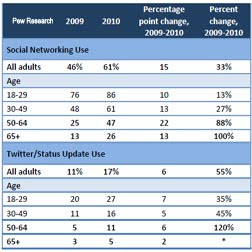 Yesterday, someone asked me how I decide to write about something after I decide to write about something. My immediate thought was to shrug it off, saying it's complicated. Because, well, outside of a classroom it is complicated.
Yesterday, someone asked me how I decide to write about something after I decide to write about something. My immediate thought was to shrug it off, saying it's complicated. Because, well, outside of a classroom it is complicated. Most copywriters and creative directors say the same thing, but with different words. Many have become skilled at making the answer sound cool and mysterious instead of aloof. Since I also wear the hat of an educator, I'm always looking for ways to communicate the process (even if some of it resides in the subconscious).
The stuff that doesn't reside in the subconscious is much like frosting on a cake. Right. Commercial writing, regardless of format, often involves taking some idea and then squishing it through various icing and piping templates. You need the right ingredients, whipped to the right consistency, and then applied with the right amount of pressure through piping and various templates. If you do it right, it sticks to the surface, looks beautiful, and keeps people coming back for more.
There are many filters; too many for this post. But more often than not, the decorative appeal of great communication begins with conversations that consumers will never hear. It's called client education, because they often have a say in the ingredients used, how long it's whipped, and how much pressure will be applied. Is it any wonder consumers see ugly ad messes?
Balancing Four Spheres Makes For Great Frosting.
Before I continue, I ought to qualify this just a bit. Sometimes clients are right, even though most creatives hate to admit it. But that aside, let's take a look at the initial communication process, which can be broken into four basic conversational zones.
• What Clients Want Consumers To Know. Regardless how often clients talk about outcomes, most of them want consumers to know something regardless of the outcome. And, they believe that the more consumers know something, the better. For whatever reason, what they want consumers to know becomes a priority at some point.
• What Clients Want Consumers To Do. Secondarily, there are outcomes. Ultimately, clients want consumers to rave about the ads, buy the product, and tell all their friends to buy it too. If at all possible, when those customers tell their friends, the client wants them to include what they want them to know.
• What Consumers Want To Know. Consumers like to pretend they loathe advertising. In truth, they loathe bad communication, which unfortunately consists of most of it. The reason they say they hate it so much is that it seldom communicates whatever they want to know, which is usually how it is going to enhance their lives for a reasonable exchange rate.
• What Consumers Need To Know. In addition to what consumers want to know, there is what they need to know (which doesn't necessarily have anything to do with what the client wants them to know). This can be tricky to convey, but can be summed up best as communication they will never ask for, but are glad they received after the fact.
The Sweet Spot For Commercial Communication.
There is a teeny tiny place in the middle of that one logic and three emotive spheres. It only occurs when everything is in harmony. And when that occurs, consumers respond much like the clients want them to. Everybody gets what they want.
Anything less than harmony and the entire process breaks down. And some of it doesn't even have anything to do with marketers or clients. Oversimplified, most messages break down when two conflicting spheres are overemphasized.
• What The Client Wants Them To Know/Client Want Them To Do Conflict. Sure, every client says they want specific outcomes (sales) until they see a first draft. Immediately following receipt, they want it to be more aggressive, more informative, more brand-centric, more whatever, regardless of the outcome. In short, they are not content with selling chocolate frosting. They want consumers to know where beans came from, what the mixing process is, what temperature it cooks at, the nifty wrapper selection process, why the font was chosen for the name of the company, who sits on the board, etc. Whew.
• What The Client Wants Then To Know/Consumer Wants To Know Conflict. Worse than the internal client conflict, what many clients want consumers to know has nothing to do with what the customer wants to know. So, as the client prattles on about the square footage of their factory, they never hear the consumer ask if it tastes yummy.
• What The Client Wants Them To Do/Consumer Logic Conflict. Sometimes, the client might have the right message, but someone else has already won their hearts. In those cases, it doesn't matter if you have the best milk chocolate in the world. Even if they enjoy the message, they could be diehard dark chocolate fans.
• What The Consumer Wants To Know/Consumers Logic Conflict. And sometimes, well outside the marketer's control, the consumer has internal conflicts over a purchase. That is just the way it is. For example, the consumer might love milk chocolate, but also know that too much isn't all that good for your teeth or waistline. The client knows it and the consumer knows it.
Imagine. After all this, assuming you do hit the sweet spot, the end result is frosting. On an educated guess, I surmise at least half of the frosting sucks before anyone considers how to apply it. At least half to three-quarters of the good frosting will still be spoiled during the application, whether or not the client has a decent product, service, delivery method, customer representatives, or operations plan. But those are different stories.
































